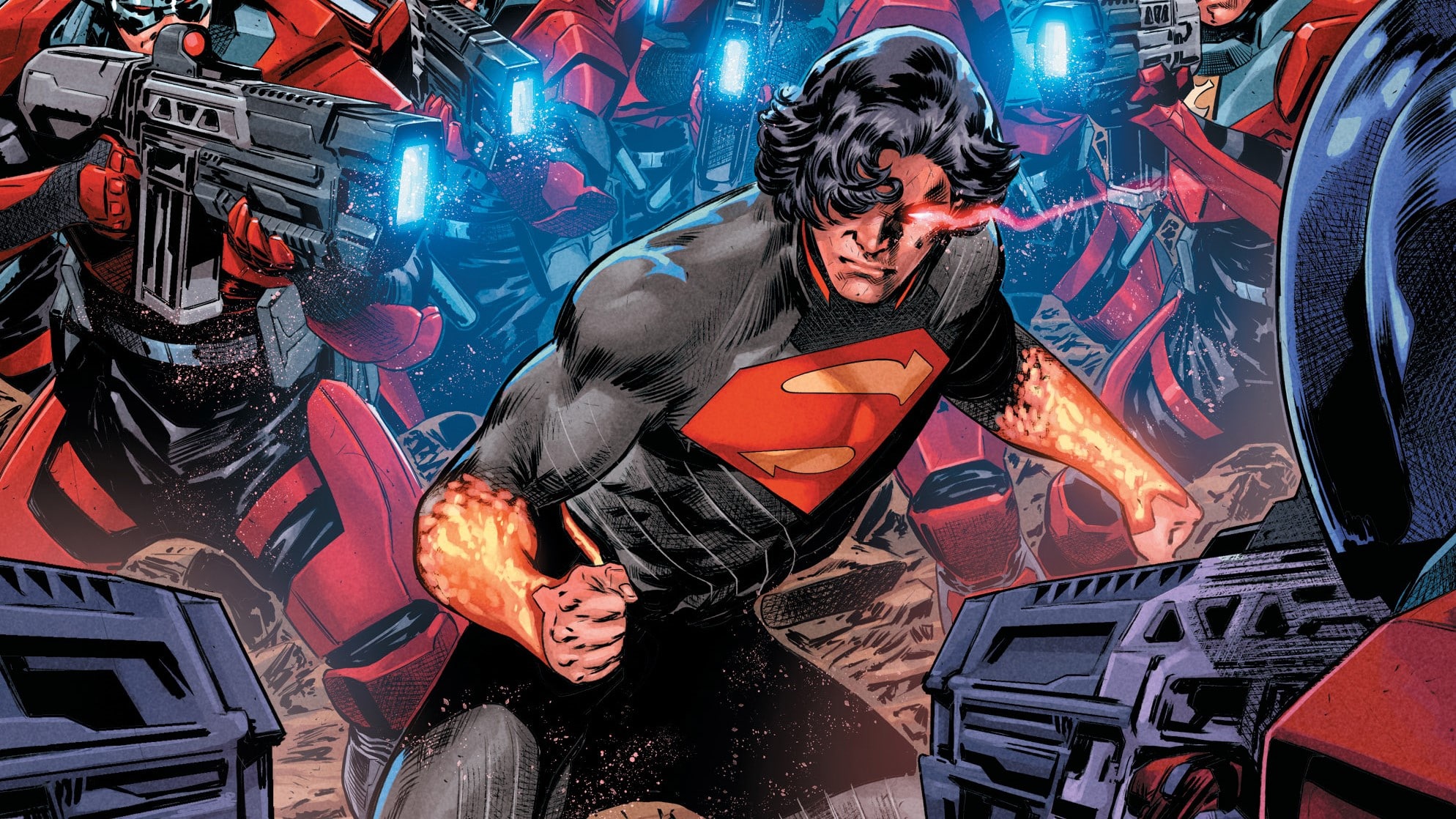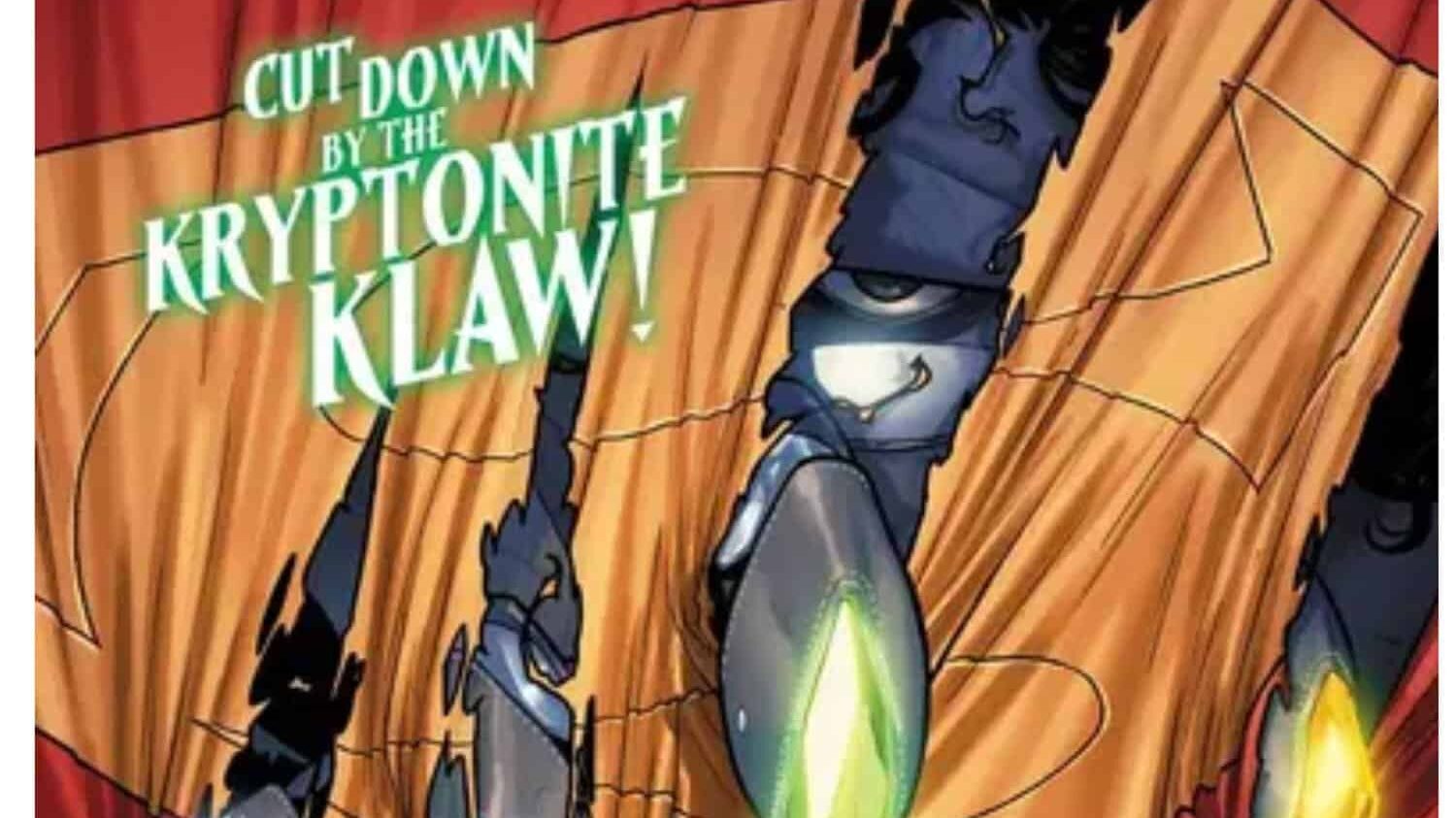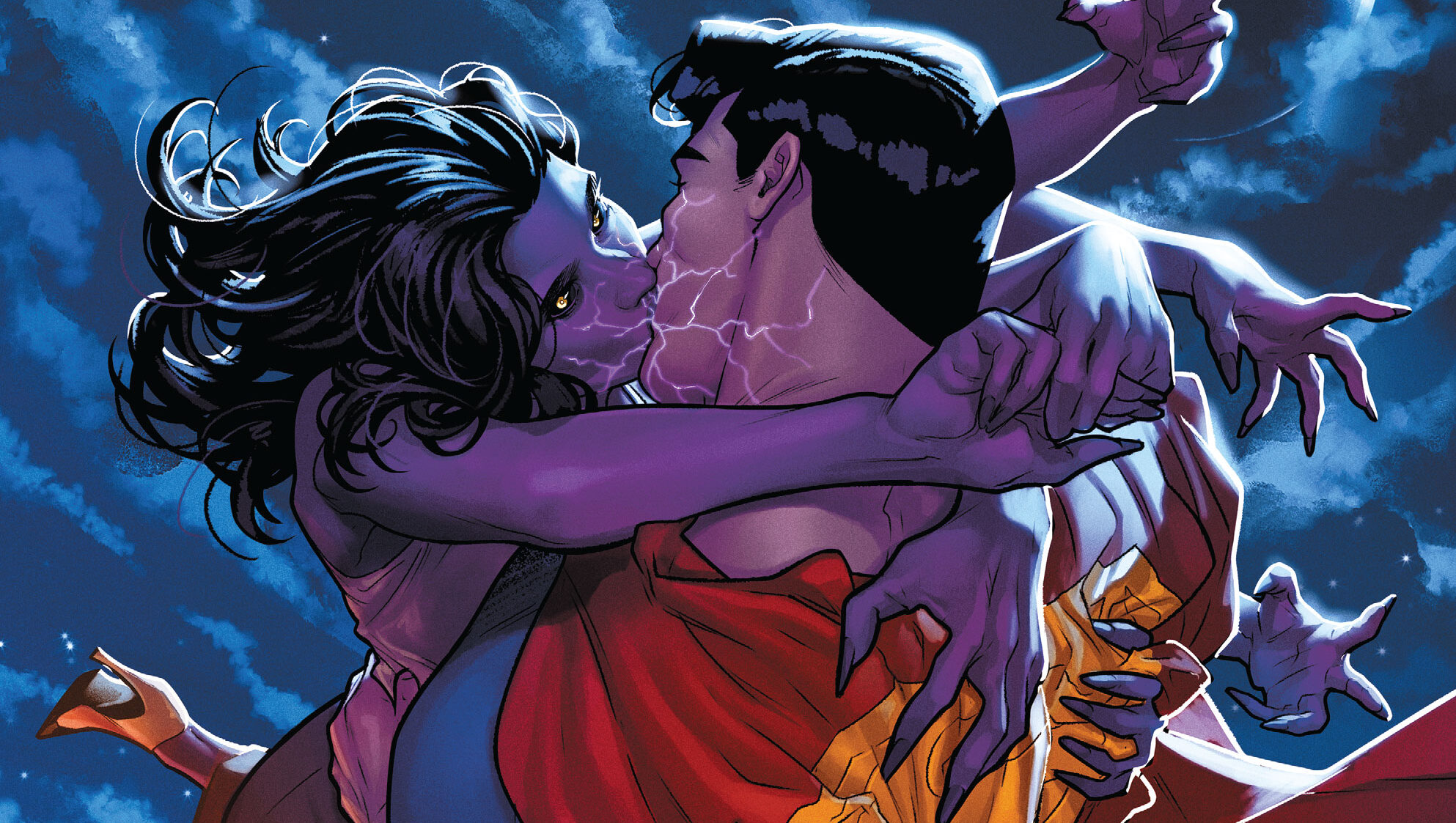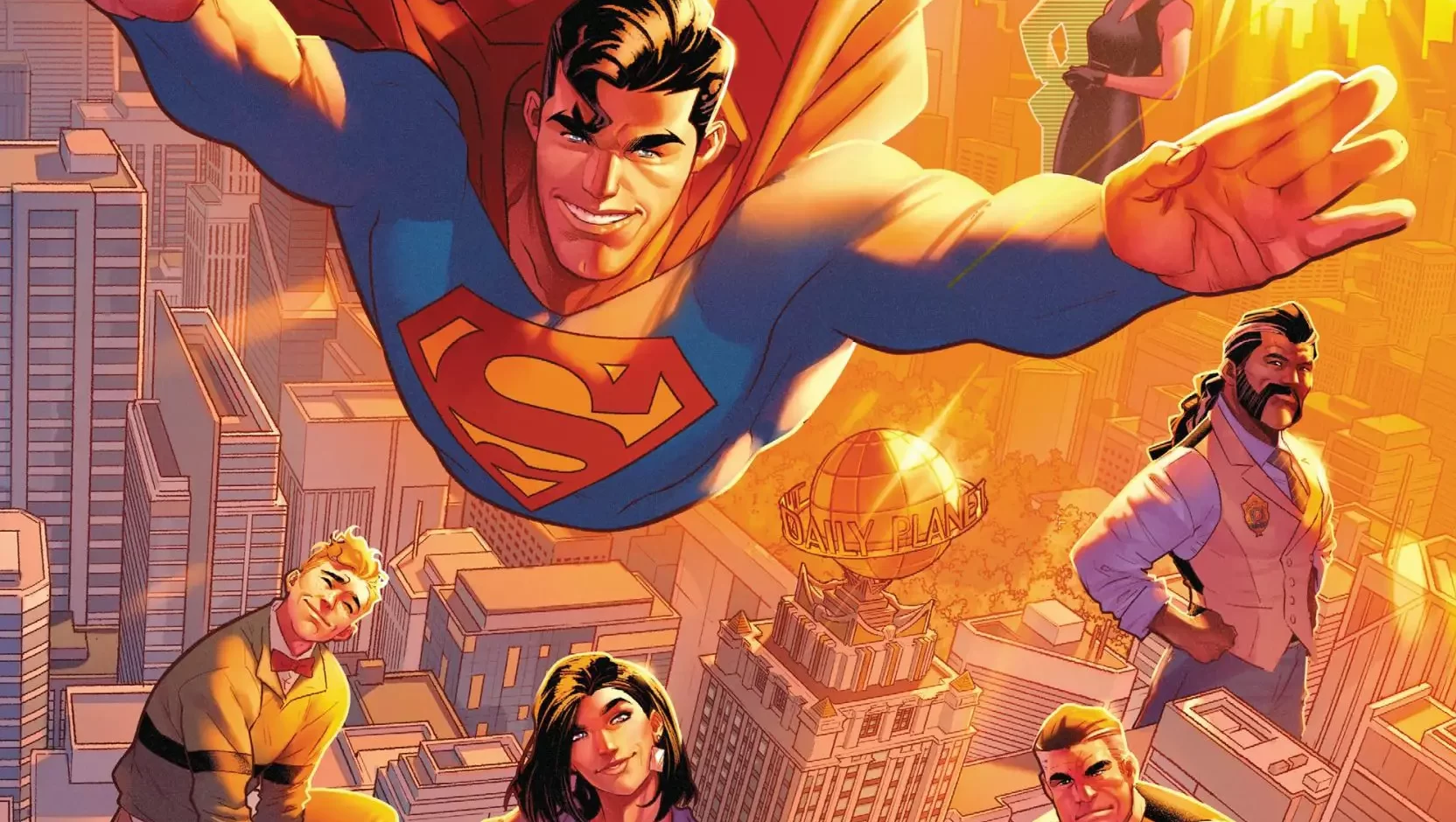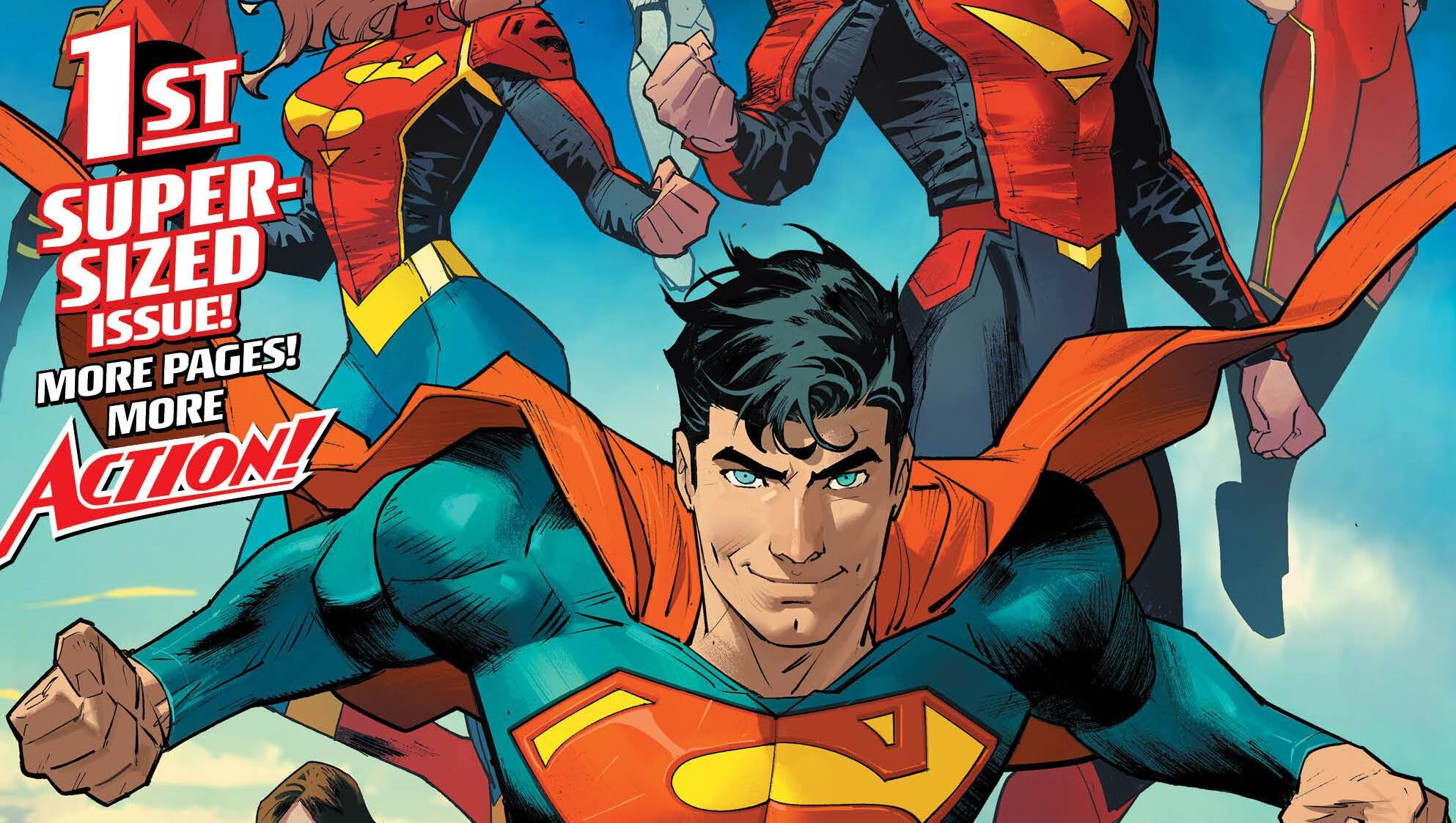Three issues into each of the three flagship titles, DC’s Absolute line has hit the ground running from both a commercial and critical perspective. In a universe woven with the fabric of antilife, DC’s big three — Batman, Wonder Woman and Superman — have been cast as underdogs, railing against the hegemonic greed of institutions left unchecked for too long.
While Scott Snyder and Nick Dragotta’s Absolute Batman reckons with the reality of an unforgiving city and the working class left to fend for itself, and Kelly Thompson and Hayden Sherman’s Absolute Wonder Woman grapples with ancient gods attempting to erase symbols of female strength from existence altogether, Jason Aaron and Rafa Sandoval’s Absolute Superman is tackling the moral bankruptcy of global corporations. Through a combination of modern slavery, paramilitary enforcement and AI, this Superman faces the might of a brand rather than a punchable face of evil like Lex Luthor through the opening three issues. While superheroes fighting systems over supervillains may be nothing new, it’s definitely notable that this is the approach DC has taken to its alternate universe. I would even argue it’s a critical element of the line’s appeal and early success.
DC has given us working-class heroes: those “children of the dirt” as Superman puts it, powerful enough to take on the systems of oppression that we are not. In a world that’s more distrustful of yet exploited by the global elite, the power fantasy of Superman destroying Lazarus Corp facilities while ensuring the workers are paid on time feels very apropos for the world we readers find ourselves in.
The parallels Aaron establishes between Krypton and Earth (both ours and Kal’s) creates a refreshed relevancy to Superman’s origin. Class is central not just to the Earth Kal El finds himself on but the Krypton he hails from. As is often the case with fantasy fiction, the idea of social class is defined and enshrined within Kryptonian culture. The ruling class, the Science League, defines the entire thought framework for Krypton in a Derridean sense: “Power is always exercised through signs and language.”
Firstly, they control the scientific assumptions on which the planet bases its language and knowledge system, crushing opposing thoughts and using the class system to reduce their perceived societal value. Science is synonymous in this culture with knowledge and truth. It’s clear from Jor El and Lara’s dissent that veracity is of limited value to the ruling classes. Issue #3 enforces this point in no uncertain terms in that Kal’s article on the imminent collapse of Krypton’s climate is destroyed before it’s ever published, and Jor El is charged with heresy without so much as a meeting with the Science League. The denial of climate change and its effects is a particularly pertinent parallel with our own world, as is the fact that the working classes are, initially, the casualties of disasters like collapsing mines before it eventually claims the entire civilization. As Kal himself states in issue #3:
“If something was sick inside this planet, it would make sense … that the first people to feel the pain … would be the ones with their hands in the dirt.”
Aaron reveals an even uglier truth in issue #3, which is that the Science League was only publicly denying the disaster about to befall Krypton, and arranging passage off planet for only the upper classes. As on Earth, it was never about the science, it was about consolidating power, retaining the structures that serve the few and not the many in the name of self-preservation. Sandoval’s haunting depiction of the effects of Kryptonite on the planet’s flora and fauna provides a brutal illustration of the devastation, which contributes to the overall sense of tragedy and injustice.
On Earth, those living in poverty in remote corners of the globe are exploited by those who claim they should be grateful for employment. Just as the Science League did on Krypton, Lazarus Corp furthers its interests under the guise of “peace.” The meaning of the word “peace” is decentralized and co-opted, redefined to mean “preserving the status quo,” which in this case means the continued advancement of Lazarus’ global interests at the expense of the climate and the workers exploited into destroying their habitat. This peace isn’t preserved, it’s enforced, or “made,” by Peacemakers, who brutally kill anyone who risks disturbing Lazarus’ industrial secrets.

Just as on Earth, Aaron makes it explicit that it is those most economically vulnerable who are at the sharp end of the climate crisis. The Amazon in Brazil and its people are real world victims of climate denial. It’s therefore an example of human action, and the destruction of profit for economic gain, which makes it the perfect analogue for Krypton and our own world.
Secondly, symbols: By emblazoning the social class of each citizen on their front, they protect their power and eliminate the chance of upward social mobility. The “S” symbol in this context is one of resistance, most proudly symbolized by the Els. Two proud members of the labor class who were effectively excommunicated from the Science League for being too smart and righteous (this is a little too ham-fisted for me — one of my few gripes), Jor and Lara’s desire to help Krypton through the disaster that ends up being its doom gives young Kal the moral standing and ability to see past prejudice that the Kents give his canonical counterpart. Class consciousness, both in the sense that it exists but also that it is an artificial construct used to divide and conquer, is therefore central to Absolute Superman’s pathology.
On Kal El’s Earth, the symbols Aaron and Sandoval use to portray Lazarus Corp’s power are their weapons. The weapons being used to destroy lives and communities being labeled with slogans such as “Lazarus means peace. How’s my driving?” is drenched with irony, but also very directly communicates Lazarus’ intent. They are the ones who get to define power. And just as the Science League did, they get to ascribe value to human life. When the Peacemaker says “Lazarus means life,” he’s not extolling the virtues of Lazarus’ products, he is telling a man he labels an “animal” that Lazarus has the power to determine whether he lives or dies.
So, to what extent does this altered history change either the essence or the purpose of Superman? What’s most striking in the first two issues is the abject despair he displays at seeing the cruelty done to the miners in Brazil, the “industries that run on suffering” and the waste of the “precious” planet he finds himself on. The belief in human virtue is so fundamental to the Superman we’ve come to know over the decades that it’s strange to see it replaced not by cynicism but by sheer disbelief. But for many, that idealism just doesn’t chime with contemporary life. This phenomenon is evidenced by the saturation of “evil Superman” archetypes we’ve seen in superhero fiction lately.
This Superman isn’t dark and broody in an edgelord-y way, though; he’s an innocent soul who’s been scarred by the trauma he’s experienced in his young life. He can’t be the beacon of hope to the world that our Superman is, because that’s not the life he’s lived. If he’s not the one to teach it to us, perhaps it’s up to the people to teach him. The brutal and senseless massacre of the workers by the Peacemakers at the end of Absolute Superman #2 serves as a stark reminder that, in our real world and in Aaron and Sandoval’s fictional one, this lesson won’t be easily learned. This tension is part of what makes the series exciting.
The fantasy at the heart of Absolute Superman remains that one inspirational person can break and remake the system. It’s a very Western, very American ideal that’s deeply entrenched in genre storytelling throughout history, but it remains a relatively conservative viewpoint. The notion that one individual could ever be powerful enough to undo decades of systemic oppression is literally fantasy. The power of the individual in DC’s Absolute line contrasts well with Marvel’s The Ultimates by Deniz Camp and Juan Frigeri, in which the heroism of Iron Man and Captain America is defined by their collectivism. The foundational tenet of collectivism over individualism is perhaps more progressive and more grounded in realism, so let’s not pretend this book is something it’s not.
It still has a message, though: The most appealing and enduring hope of Superman in 2025 is the idea that you can have power and be fundamentally good. That is where Absolute Superman is most compelling.
Buy Absolute Superman #3 here. (Disclaimer: As an Amazon Associate, ComicsXF may earn from qualifying purchases.)
Jake Murray spends far too much time wondering if the New Mutants are OK. When he's not doing that, he can be found talking and writing about comics with anyone who will listen. Follow him @stealthisplanet.bsky.social.

